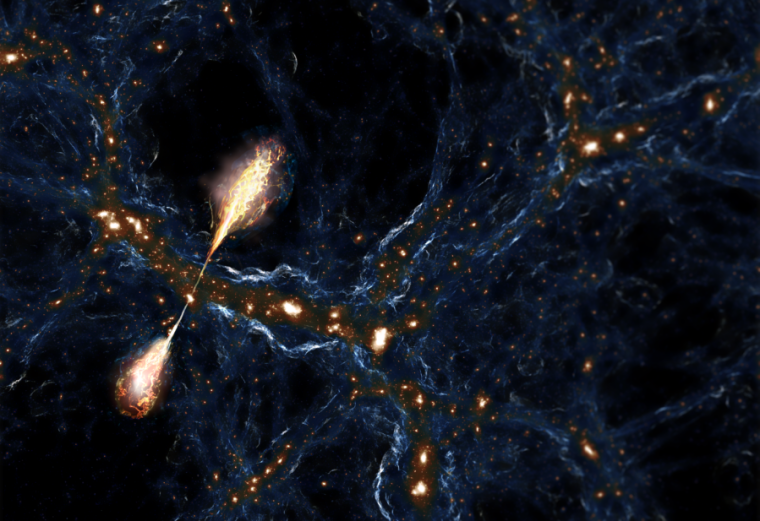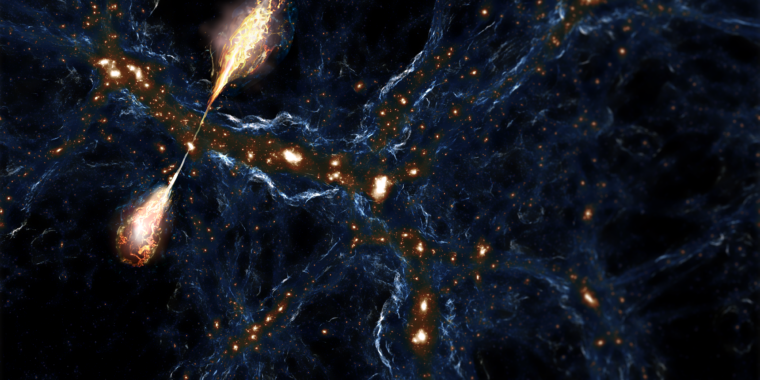
Martijn Oei (Caltech) / Dylan Nelson (IllustrisTNG Collaboration).
The supermassive black holes that sit at the center of galaxies aren’t just decorative. The intense radiation they emit when feeding helps drive away gas and dust that would otherwise form stars, providing feedback that limits the growth of the galaxy. But their influence may extend beyond the galaxy they inhabit. Many black holes produce jets and, in the case of supermassive versions, these jets can eject material entirely out of the galaxy.
Now, researchers are getting a clearer picture of just how far outside of the galaxy their influence can reach. A new study describes the largest-ever jets observed, extending across a total distance of 23 million light-years (seven megaparsecs). At those distances, the jets could easily send material into other galaxies and across the cosmic web of dark matter that structures the Universe.
Extreme jets
Jets are formed in the complex environment near a black hole. The intense heating of infalling material ionizes and heats it, creating electromagnetic fields that act as a natural particle accelerator. This creates jets of particles that travel at a substantial fraction of the speed of light. These will ultimately slam into nearby material, creating shockwaves that heat and accelerate that, too. Over time, this leads to large-scale, coordinated outflows of material, with the scale of the jet being proportional to a combination of the size of the black hole and the amount of material it is feeding on.
Typically, black holes form a jet at each of their poles, resulting in paired outflows traveling in opposite directions. We’ve seen plenty of examples of these at various scales, launched from stellar-mass black holes all the way up to supermassive ones, which can form quasars, the brightest objects in the Universe.
The new jet discovery came as a result of an organized search for large jets, done at radio wavelength at an observatory called LOFAR (low-frequency array) that covers portions of the Northern Hemisphere’s sky. The data obtained with that telescope has been scanned by a combination of machine learning and citizen scientist volunteers. This program has identified over 11,000 jets that cover megaparsec distances (each parsec is a bit over 3 light-years). The paper that was released on Wednesday describes the largest of these, which has been named Porphyrion after a giant from Greek mythology.
Initial follow-up observations involved finding the galaxy that produced it. There were two objects roughly in the right place, but one of those had lobes that were extended along the axis of the jets, indicating that it was the most probable source. The galaxy is roughly 10 times more massive than the Milky Way, and spectroscopy indicates that we’re looking at it as it existed roughly 6 billion years after the Big Bang, or a bit over halfway back from the present day.

